#Kagachi
Explore tagged Tumblr posts
Text
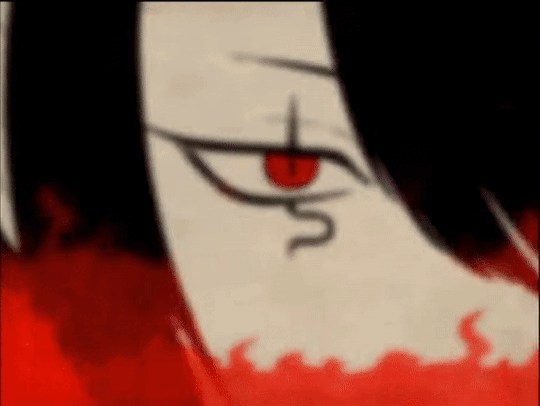
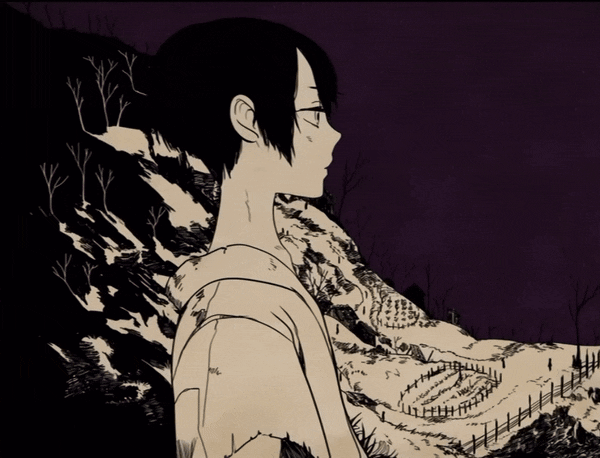
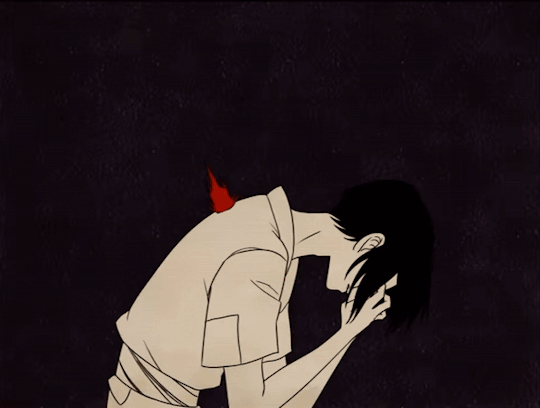

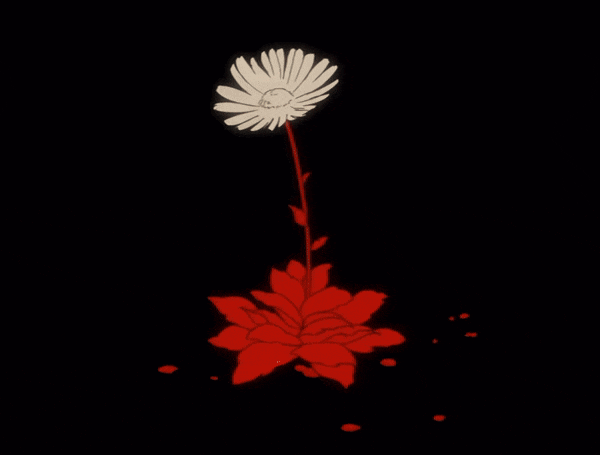

Kagachi
33 notes
·
View notes
Text

Gijiri drawing I did for his ‘birthday’ on 19.01
13 notes
·
View notes
Photo
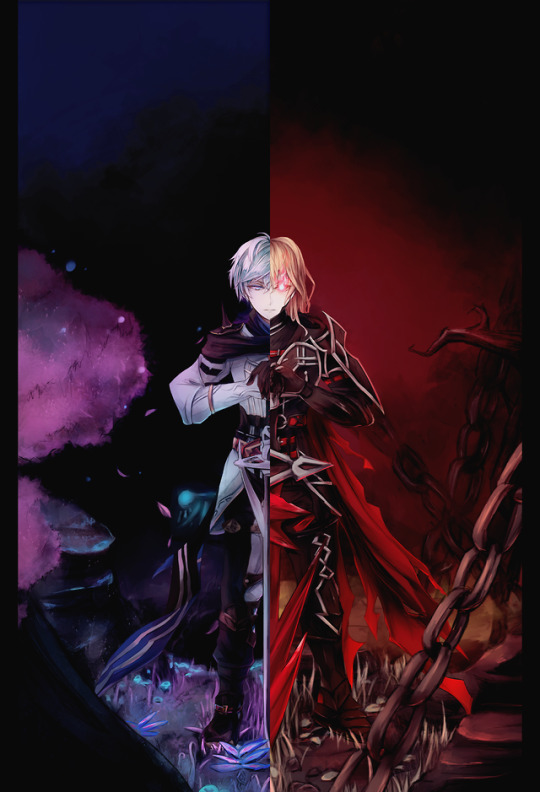
If I am the priestess, then you shall be the judge.
52 notes
·
View notes
Text
Title Oninaki Developer Tokyo RPG Factory Publisher Square Enix Release Date August 22nd, 2019 Genre JRPG, Action RPG Platform PC, Nintendo Switch, PS4 Age Rating Teen Official Website
Oninaki, the latest release by Tokyo RPG Factory, is an action JRPG whose core is an exploration of belief-based concepts involving life and death. The game introduces its own religious precepts; a foundation for the story and unfolding events. Approach it strictly as a game and you may miss it, but understanding the underlying intentions of questioning our own predispositions towards life, death, and faith, and Oninaki may have something deeper to offer than at first glance.
Oninaki takes place in a world in which the principles of their religion shapes all. From society, to community, to individuals’ daily living, their precepts govern their lifestyles. In this world, the key precept is reincarnation; life, death, and rebirth as a new individual, void of any memories or connections to past lives. This principle implies a release from all bonds of the living world. Grief from loved ones left behind or regret held by the deceased may interrupt this reincarnation cycle, preventing souls from leaving the Beyond and becoming Lost. These Lost become trapped in the Beyond, a parallel plain that lies between the living world and the path onward to rebirth. The Watchers are a group of individuals who are dedicated to helping the Lost find peace and move on for reincarnation. Our main hero, Kagachi, is one such Watcher, assisting Lost souls make peace with any lingering regrets or attachments they may have. For if the Lost linger, they become consumed by their feelings and become the Fallen.
Kagachi will face many difficulties throughout his time as a Watcher. Unrest and dissatisfaction with the precepts of reincarnation are rising, as more individuals seek ways to keep their memories or meet loved ones after death. With the population turning away from their faith and violations against these precepts rampant, Kagachi and the other Watchers are faced with an ever worsening dilemma. Along with the increasing prevalence of Lost, as they cling to their past lives and loved ones, and increasing Fallen, as too many Lost are overcome by their feelings, an even greater threat reveals itself. Once terrorizing the world indiscriminately before being sealed away, the Night Devil, an entity supposedly born from lingering feelings of hated, is once again loose, terrorizing the population and bringing further disturbance to the reincarnation cycle. Along with a mysterious Lost girl named Linne, a connection between her, Kagachi and the Night Devil becomes evident. What does this all mean for Kagachi and what consequences to reincarnation will this connection have?
The story in Oninaki is framed around this principle of reincarnation. Life, death, and rebirth are the foundation in which all main and subplots are built upon. It’s also the means of how the story immerses us in the faith conversation, by approaching similar conflicts and questions that we may struggle with in regards to our own beliefs. The game’s religion is simple enough to understand, but allows for so much potential in regards to building and branching off of it. So I’m left more than a bit disappointed that the story itself is actually quite linear, never tapping into or taking full advantage of that potential. Simply put, I expected far more depth. I’ll admit that the story has its few unforeseen twists and an overall imaginative tone that kept me attentive throughout. Yet the main plot, in actuality, is really just a collection of quests and a mishmash of events that moves the story forward with minimal exploration into the thoughts and feelings of those involved. Rather than developing a deeper story, lore, or its characters, the game heavily favors implicit profundity, leaving it solely to us to derive deeper meaning from the narrative and events unfolding. Unfortunately, there just isn’t enough substance overall for any lasting immersion or profound impact.
Nevertheless, I will say that Oninaki has moments of brilliance that beget genuine intrigue. The promise for reincarnation directly muddling the values of one’s current life is a fascinating concept, as well as the value death has to bring about a new life should one feel dissatisfied. Also, the valuation of life itself is a topic we can all relate to, for in life we strive for happiness and fulfillment, yet are bound by societal, religious, and other frameworks. So while I do appreciating these few efforts made that successfully cause us to reflect on our beliefs as they relate to the narrative, or those efforts made to entice us to emotionally invest in the more significant characters, the severe lack of detail prevents any deeper, lasting emotional impact. Finally, I’m vexed that the concepts of life and death are not more fully explored. Despite being foundational to the story, too often life and death are treated as trite. In fact, many times throughout the game, the way death is discussed as it relates to sacrifice, illness, murder, suicide, loss, is almost careless, empty of its own significance, as well as its effects on the living, not to mention its direct tie to the major game elements that are the Lost and the Fallen. Again, there are flickers of excellence hidden in Oninaki’s story, as well as in the theological allusions and the questions posed. Yet, there’s also a wealth of potential here that could have been addressed and built upon for significant depth and it’s a disappointment how it never coalesces.
Not only the main story, but Oninaki‘s subplots and side stories also suffer from lack of depth. The majority of these revolve around Lost individuals and their lingering regrets, for regret is the main culprit for a Lost being a Lost. Although there is some variation as to the reasons for a Lost soul’s regret, those reasons never go beyond the obvious and the expected. Even if these reasons for regret are common, at least give me depth and uniqueness in the Lost’s individual backstories. Too often we simply run into a Lost who wants us to bring them to a specific person or place. Other than the relationship itself; spouse, child, parent, and sometimes the reason for their demise; murder, accident, illness, that’s all we ever receive. It results in a shallow, predictable narrative that hurts the overall effect and so these side-stories and quests come off as cookie-cutter, leaving a feeling of overt familiarity. There is such opportunity here for emotional depth as well as to add details relevant to the main story, but it’s just another opportunity missed.
This lack of depth hurts, but I believe its greatest harm is to Oninaki’s characters. Our main hero, Kagachi, is the strong, no-nonsense trope. And that’s it. Much of his personality, feelings, and relationships are implied, never receiving any meaningful development. He’s your typical blunt individual, indifferent to all around him. His character never grows or develops past this and that indifference to everything and everyone around him makes him a narrative detriment. There are several moments in the game that involve Kagachi and supporting cast members, some of whom supposedly have a deeper relationship with him. When these moments unfold, they falter in their emotional strength and fail to make the lasting impressions strived for. This supporting cast is equally unimpressive, as we learn nothing of them beyond their base personalities, their direct relationship to Kagachi, and their fates as the plot unfolds. Mayura, Kagachi’s childhood friend, and Linne, the mysterious young girl, are the two major side-characters, yet we never learn enough about them; their inner thoughts, their deeper feelings, to ever make a genuine emotional impact. Even as more of Linne’s story is unveiled, most of it regards who she is as a plot device and little to who she is as a person. They are unmemorable and they should not have been. Other characters receive even less and none are developed to the point that any of us would invest in them. I think the only characters that will stick with me are a few of the Daemon, including Aisha, Kagachi’s starting Daemon. She and the other Daemons receive backstory through Daemon Lore and hers in particular, along with the glimpses of personality we get from her, make for a captivating character. She and her story stand out so acutely in this sea of mediocrity. Even if learning about her is an extra task and, at times, interrupting to play flow, it is one of the few outstanding examples of the depth that should have been prevalent throughout. Other Daemons have appealing stories too, but the fact that the extra often outweighs Oninaki’s main story and characters is disappointing.
Narrative shortcomings aside, Oninaki’s gameplay possesses a similar degree of originality as its story. Gameplay is heavily dependent on its combat, leaving little room for exploration, or anything else for that matter. You fight until nothing’s left, and then move on. Fortunately, there’s a bit of innovation involved. Kagachi fights alongside his Daemons, Lost souls who choose to bind themselves to him. Each Daemon represents a different weapon, fighting style, and skill set, and as you continue using a particular Daemon, points in the form of Soul Stones are gained to unlock new skills, as well as unlocking Daemon Lore placed around the skill tree. Passive skills affect stats and activation speeds while attack skills have different ranges and attributes. Up to four skills can be assigned at a time for a Daemon and four Daemons can be assigned and switched in during combat.
More Oninaki on Page 2 ->
As for the combat itself in Oninaki, it boils down to using a general combo with the Daemon-specific weapon in tandem with attack skills. The Daemon mechanic is quite innovative and choosing the right Daemon for a given situation is key. Weapons and styles range from hard and heavy, to quick and close, to long range, projectile, and balanced. Finally, each Daemon also has an innate non-combat ability. For example, Aisha the katana wielder, offers a dash to Kagachi that helps put distance between attacking foes and Izana, the Scythe user, has a warp move that allows Kagachi to maneuver behind enemies. Several Daemon offer jump capabilities and few have defense abilities, such as raising shields.
Another mechanic to Oninaki’s gameplay is the Beyond. During the course of play, Kagachi can instantly shift through the Veil that separates the living world and Beyond to fight enemies, progress down blocked paths, or interact with the Lost. Also, both the living world and Beyond will each have their own sets of enemies to fight. At times, Kagachi will suffer Veil Blindness until defeating a specific enemy, which will restore his sight in the Beyond. Though the concept is amusing, this system could have lent itself to more exploration or innovative side play, breaking the monotony of strict combat-based play.
Besides direct combat and the unlocking and powering up of Daemons, there is little more to gameplay in Oninaki, but there are ways to improve your chances in more difficult fights. As you attack, you gain Affinity with your Daemon, represented by a percentage. As this increases past 100%, your attacks become stronger, but then defense diminishes past an Affinity of 150% and up to the max 200%. Also, once Affinity reaches 100%, you can Manifest, unleashing Kagachi’s power for a limited time strength boost. Certain passive and active skills have secondary benefits during Manifestation and when stacked, can turn the tide of any fight. Outside of direct combat, new weapons and buff/debuff lending Shadestones can be found, crafted, and equipped. Most new weapons will be enemy drops, but all weapons can be upgraded. The game’s sole shop offers the ability to upgrade weapons, socket Shadestones into those weapons, craft new weapons from old, and craft new Shadestones. Only three craftable weapons and Shadestones are available at a time and are randomly swapped and assigned after every one hundred Fallen slain.
As for Oninaki’s overall execution, combat is acceptable, with its strengths mainly in its creativeness. The variety of the Daemons, their exclusive weapons, and the many types of skills all provide an original touch to the traditional JRPG formula. And as I said, I really appreciate the Daemon Lore and its direct implementation within the skill tree, as I found myself wanting to unlock them all. That allowed my experimenting with all the different Daemons rather than just sticking with the first four we find. Trying them all out, discovering their different skills, and mowing down waves of enemies can all be pretty fun. However, even with all the different Daemons and their unique characteristics, combat can become repetitive. The choice to go with a standard, unchanging combo per weapon, anywhere from five hits for light weapons down to a two hit combo for heavy weapons, quickly becomes stale and even the vast number of skills provided struggle to compensate. Also, there are just too many Daemon. Even after trying them all and expanding their skill trees, I found myself favoring a fraction of them, as others are either a chore to use or are too similar to the point of redundancy. Rather than so many, I would have preferred fewer if it meant a more robust combo system. Combos via directional input or a weak + strong, pattern based structure would have been a better choice. Combine those setups with personalized combos per Daemon and I believe Oninaki’s combat would have been incredible, far and away from the repetitive, and sometimes tedious, mechanic we have here.
This slideshow requires JavaScript.
Other mechanics, such as navigating the shop, accessing the Memories, Help topics, story recaps, and other resources in the menus, as well as the controls, all work well. Having simplicity in usage and accessibility to a database for everything encountered in-game is a welcome addition. The controls are fairly strong, in that both keyboard and controller setups are equally intuitive and easy to learn. I had zero problems with the default button layouts and yet you can customize, too. Always a plus. One aspect of control I took issue with is in regards to the delays between executing different actions. There is a noticeable pause that must be taken between, for example, launching a combo and healing. You can’t just heal, or you can’t just launch a skill after a combo. Rather, you must account for a delay. Now there are passive skills that allow you to minimize some of these delays in different actions. For example, the delay between using consecutive attack skills can be reduced for some Daemon, as well as beginning a combo immediately after a skill. Really though, I would have just preferred this being a non-issue in the first place. It’s both a needless bother and poor design choice. It’s not game breaking, but annoying enough for a mention.
The final aspects to address are Oninaki’s aesthetics and this, too is a mixed bag in terms of choices made and overall quality. Visually, Oninaki features some absolutely stunning artwork, depicting main characters and Daemons in gorgeous detail. Especially the Daemons, their depictions help immensely to remind us that these were genuine individuals with their own previous lives and personal stories. I almost wish this was a 2-D game if it meant having this level of artistic quality throughout. As for the 3-D work, it’s dull, unpolished, and uninspired in comparison. The character models are overly simple and bland, giving the game a dated feel. The enemies fare better, as their designs are imaginative and colorful, giving them more vividness compared to the human models. Many of the environments are also of better quality, bringing needed style and tone to the world. However, the backgrounds for these environments are often bland and the play areas themselves and inconsistently detailed. While some are gorgeous, dramatic, and lively, others are entirely void of energy. In these, once enemies are cleared, the areas are just too blank and empty. Lastly, I am impressed with the copious lighting effects. From the auras of buffs and Daemon switching and the glows and generous use of colors to demonstrate attack skill power and range, to the gentle lighting of serene landscapes and the abundant brightness of the bustling city, the lighting is incredible. It perfectly sets tones ranging from dire situations and intense fights to the tranquility of nature and the quiet calm of heart to heart moments. Visually, Oninaki is 2-D beauty and vividness plagued by bland 3-D designs.
Oninaki’s audio is strong, featuring a fitting soundtrack and impressive voice acting. The music lends itself nicely to both the particular events on screen and the overall tones of the game. Many of the tracks match the energy of a solid fight or convey the urgency of plot-moving scenes. All the tracks fit and all are a pleasure to listen to, even if some are too short and tend to get themselves lost during the action. There is also a slight overuse of silence in the game. I do enjoy it when it’s an opportunity to enjoy the ambiance, but the long, silent pauses between a track’s loop occur often enough to notice. As for the voice work in Oninaki, the voice acting is great, as it brings much needed life to a narrative in need of substance. I do wish it was fully voiced, since what we do get improves the experience. Instead, the rest of the time we only get single words, grunts, and other audio gestures during the majority of conversations. Fully voiced conversations during the entirety of the main quest would perhaps have encouraged me to further emotionally invest in the characters as well. This is one of the reasons why I felt more connected to the Daemons, as their Lore scenes are all fully voiced. Other than a few uninspired tracks, a silence overuse issue, and my want for full voicing, the audio is one of the most noteworthy aspects of Oninaki.
Oninaki could have been extraordinary. Artistic beauty, ingenious ideas, solid voice acting, and a story foundation open to endless potential, is utterly diminished by flat storytelling, zero character development, overall lack of narrative depth, gameplay design missteps, and lazy 3-D aesthetics. Perhaps a more generous reviewer would have scored Oninaki higher, but I cannot simply overlook the game’s compounding faults. It’s truly unfortunate, as there are glimmers of pure magic within and a little more would have made a remarkable impact. To experience all Oninaki has to offer and to find all of those moments of brilliance, be prepared to spend 30 hours or more to do so. It will take patience, as grind and fatigue will undoubtedly appear. Nonetheless, I personally found the experience worthwhile. Yet, if a more robust effort were made, Oninaki could have been a masterpiece; refined gameplay that matches its creativeness and a story that should have conveyed perceptions, ideas, and questions that challenge how one perceives life itself. So much potential untapped, I wanted to love this game so much more.
This slideshow requires JavaScript.
[easyreview cat1title=”Overall” cat1detail=”” cat1rating=”3″]
Review copy purchased by author.
REVIEW: Oninaki Title Oninaki
0 notes
Photo


So.... I did a thing. Now Kagachi can assist me at my work place!
11 notes
·
View notes
Text


Parallels?
não sei fazer tumblr posts
7 notes
·
View notes
Text

TOMORROW
16 notes
·
View notes
Text
Oninaki - Introduction to Daemon Combat
Oninaki – Introduction to Daemon Combat
Square Enix introduces a variety of Daemons that will assist the player in battle in Oninaki, the upcoming all-new action-RPG developed by Tokyo RPG Factory. Players journey as Kagachi, a young Watcher who ushers Lost Souls into the next world. Kagachi will bond with and harness the power of Daemons, a special type of Lost Soul who could not be reincarnated. These powerful souls will assist the…
View On WordPress
0 notes
Text
Mayura: Hi I'm the childhood friend and love interest.
Me: Oh that's neat I want to see how the relationship blossoms.
*a few hours of gameplay later*
Kagachi: Stay here until I get back. Do not go in alone okay?
Mayura: Yeah I know. Don't worry about me.
Kagachi: Okay, but don't move at all.
Me: She's gonna go in alone and die isn't she?
*an hour later*
Kagachi: MAYURA?! WHHHYYY?!
Me: WHY THE FUCK IS SHE DEAD IN CHAPTER ONE THOUGH?! I SAW THE FLAGS BUT WHAT THE FUCK?!
5 notes
·
View notes
Text

Gijiri & Ido
10 notes
·
View notes
Link

Square Enix has released a new batch of screenshots and information for Oninaki, its recently announced action RPG developed by Tokyo RPG Factory.
The screenshots showcase the game’s characters, story, and battle scenes. The new information details Kagachi, the young Watcher protagonist of the game.
Get the details below.
Kagachi
“To a country where reincarnation is a way of life, death must be a source of hope.”

A young Watcher who embodies the principles of reincarnation. He has a mysterious, calm and collected persona, and thinks his life’s mission is to save the lost souls. As such, he will not hesitate in ending the life of another if it will aid him in completing his mission. Traveling between the land of the Living and the world known as the Beyond, Kagachi is duty-bound to guiding the wandering souls to continue the cyclical process of reincarnation. Upon meeting a mysterious young girl, his mission descents into a tangled destiny of blood.
Oninaki is due out for PlayStation 4, Switch, and PC this summer.
View the screenshots at the gallery.
10 notes
·
View notes
Text
Descubra os Mistérios da Vida, Morte e o que está além no novo Action-RPG ONINAKI
Descubra os Mistérios da Vida, Morte e o que está além no novo Action-RPG ONINAKI
A SQUARE ENIX anunciou que um novo RPG de ação desenvolvido pela talentosa equipe da Tokyo RPG Factory, intitulado ONINAKI, será lançado para o Nintendo Switch, PlayStation 4 e STEAM neste inverno.
O terceiro título da Tokyo RPG Factory, ONINAKI, continua a missão do estúdio de se inspirar nos clássicos jogos de RPG japoneses para criar uma nova experiência em plataformas modernas, seguindo os…
View On WordPress
#ação#Action-RPG#i am setsuna#Kagachi#lost sphear#nintendo switch#ONINAKI#playstation 4#rpg#square enix#steam#tokyo rpg factory#trailer
0 notes
Photo

Currently working on an Oninaki sticker set! Because Kagachi is just that awesome and needs more love!
39 notes
·
View notes
Note
also callahan is my favorite character from the movie! The snubbull scene made me cry 😭
Same! He’s such a relatable goober of a character xD Honestly his character arc was the highlight of the movie for me.

And yes that Snubbull scene was a bit hard for me to GIF on that one without my heart breaking :’(
#P J answers#Pokémon the Movie: The Power of Us#Callahan#Kagachi#Harriet#Hisui#F to pay respects to my dawg Snubbull ;_;
6 notes
·
View notes
Text

3 DAYS until Oninaki!
8 notes
·
View notes
Text
Tokyo RPG Factory Brings Us 'Oninaki' This Summer
Tokyo RPG Factory Brings Us ‘Oninaki’ This Summer
Tokyo RPG Factory’s third title, ONINAKI, continues the studio’s mission to take inspiration from classic Japanese role-playing games to create a brand-new experience on modern platforms following the releases of the critically acclaimed I Am Setsuna ™ and LOST SPHEAR ™. With exciting new action-RPG gameplay, players will explore the world as a mysterious Watcher named Kagachi who is bound by duty…
View On WordPress
0 notes